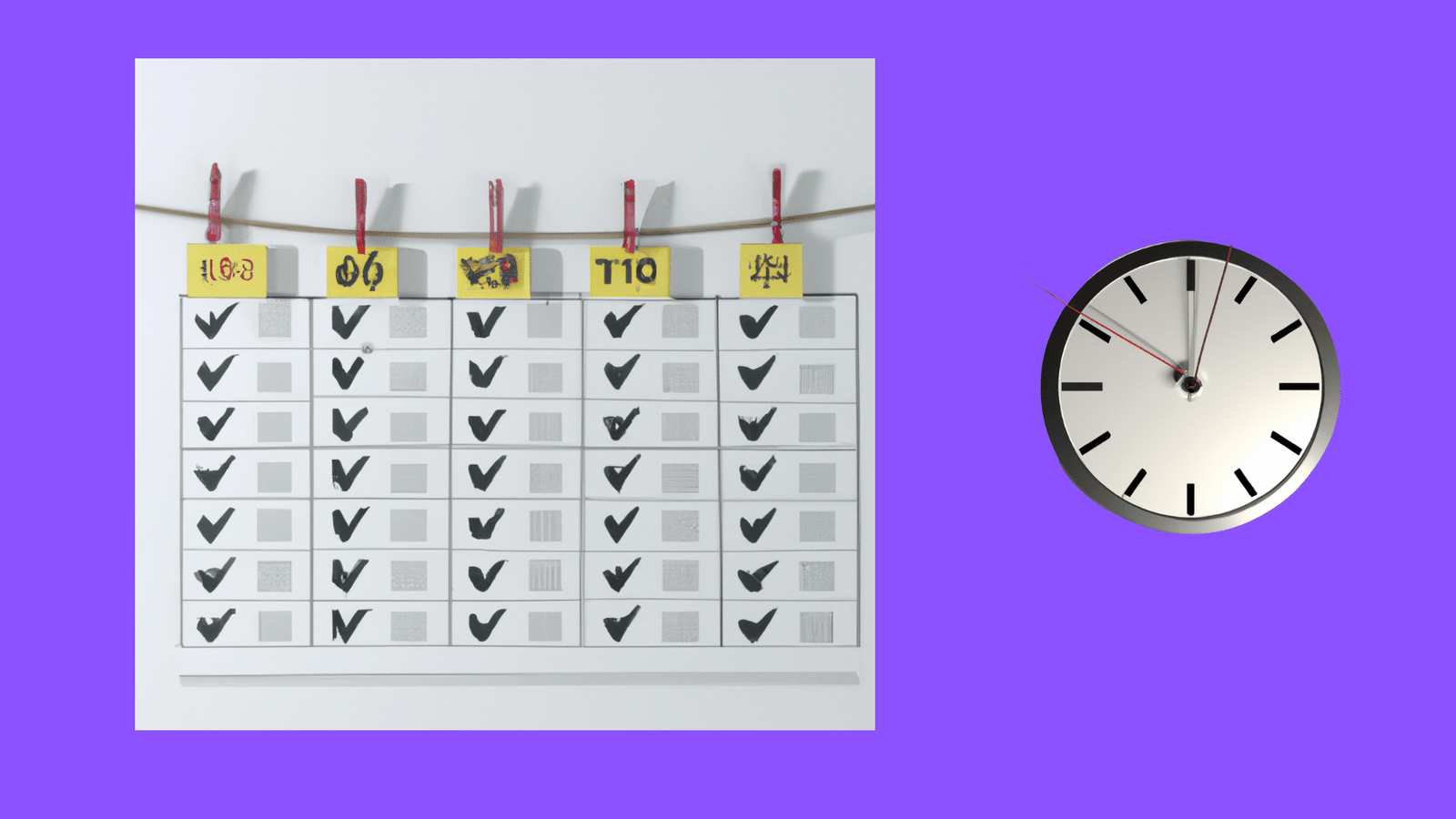Failure: A New Perspective
The concept of failure is often regarded with a sense of dread and negativity, predominantly influenced by societal views that equate failure with a lack of ability or worth. However, this perception can be fundamentally flawed. Recognizing failure as a crucial part of the learning process can significantly enhance our understanding of personal and professional development. Rather than viewing failure as a final outcome, it is more productive to see it as a stepping stone towards success.
When we consider failure in this light, it becomes clear that setbacks can provide invaluable lessons. Each failure presents an opportunity to evaluate our methods, refine our strategies, and ultimately improve our performance. This shift in perspective encourages individuals to embrace challenges without the fear of failing. Instead of detrimental self-criticism, individuals may cultivate resilience and adaptive thinking, essential traits in today’s fast-paced environment.
The psychological impacts of failure can also be profound. Often, the fear of failing leads to avoidance behaviors that hinder personal growth. However, by reframing our understanding of failure, we can alleviate this fear and foster a more exploratory attitude toward challenges. This positive approach can enhance motivation and creativity, enabling individuals to pursue ambitious goals without the paralyzing concern of failing. Moreover, understanding that notable figures in various fields have faced significant setbacks can serve as a powerful reminder that failure is not the end but rather an integral element of the success journey.
In cultivating a new perspective on failure, we can build a culture that values learning and growth over perfection. This, in turn, empowers individuals to take calculated risks and embrace mistakes as part of their development, paving the way for long-term success and satisfaction.
The Science Behind Learning from Failure
The process of learning from failure is not merely a philosophical concept; it is deeply rooted in psychological and neuroscientific principles. When individuals encounter failure, the brain undergoes significant changes, which can foster resilience and enhance cognitive abilities. One key aspect is the activation of the prefrontal cortex, an area responsible for decision-making and problem-solving. This region evaluates feedback from failures, allowing individuals to adjust their strategies in future endeavors.
Furthermore, failure stimulates the release of neurotransmitters such as dopamine, which are closely linked to feelings of pleasure and motivation. This biochemical response signifies that learning from setbacks can be rewarding, ultimately encouraging individuals to engage in further attempts, despite prior failures. Over time, repeated engagements with failure contribute to the formation of new neural pathways, thus enhancing learning capacity and creativity. As a result, individuals who learn from their failures are more likely to develop innovative solutions in their areas of work or interest.
In addition to the biological mechanisms at play, psychological attributes such as resilience and grit are essential for processing failures effectively. Research indicates that individuals with higher levels of resilience possess a greater ability to bounce back after setbacks. They tend to view failures as opportunities for growth rather than insurmountable obstacles. Studies have shown that fostering these qualities significantly enhances a person’s overall problem-solving skills, enabling them to navigate complex situations more adeptly.
Ultimately, the ability to learn from failure is not only a matter of mindset but also a physiological process that empowers individuals to evolve. Through understanding the brain’s response to setbacks, one gains insight into the transformative potential that arises from experiencing failure, thus making it a valuable aspect of personal and professional development.
Case Studies: Famous Failures Turned Success Stories
Throughout history, numerous individuals have encountered failures that initially seemed insurmountable, yet these setbacks ultimately became stepping stones toward remarkable achievements. One of the most renowned examples is that of Thomas Edison, the prolific inventor who faced thousands of unsuccessful attempts before creating the electric light bulb. Edison’s perseverance in the face of continuous failure exemplifies how setbacks can lead to groundbreaking innovation and contributions to society. His famous quote, “I have not failed. I’ve just found 10,000 ways that won’t work,” encapsulates the mindset that transformed his apparent defeats into monumental successes.
Another compelling case is that of J.K. Rowling, the acclaimed author of the Harry Potter series. Prior to her rise to literary stardom, Rowling endured a series of rejections from publishers, coupled with personal hardships that included financial struggles and the loss of her mother. Her determination and creativity, coupled with her ability to learn from earlier failures, eventually led to the publication of a manuscript that has since sold over 500 million copies worldwide, inspiring millions and spawning a global franchise. Rowling’s journey highlights how setbacks, when met with unwavering resolve, can yield extraordinary outcomes.
In the field of sports, Michael Jordan serves as another iconic illustration of overcoming failure. He was famously cut from his high school basketball team, an experience that motivated him to work diligently on his skills. This defeat ultimately propelled him to become one of the greatest basketball players of all time. His story emphasizes that superstars are often forged in the fires of adversity, showcasing that failures can instill the drive needed to achieve greatness.
These examples establish a pattern where prominent figures who have experienced significant failures not only overcame their challenges but also transformed those moments into catalysts for success. Each story serves as a testament to the idea that understanding and embracing setbacks can lead one to remarkable accomplishments and personal growth.
Practical Strategies to Embrace and Learn from Failure
Embracing failure is essential for personal and professional growth. To alter one’s mindset about setbacks, individuals can employ several effective strategies aimed at reframing their experiences with failure. First, it is crucial to set realistic expectations. Often, we create an idealized version of success which can lead to disappointment when inevitable setbacks occur. By acknowledging that failure is a natural part of any journey, individuals can reduce the pressure they place on themselves and view challenges as learning opportunities rather than insurmountable obstacles.
Another important strategy is to reflect on failures constructively. Instead of succumbing to self-criticism, one should take the time to analyze what went wrong. This can involve journaling about the experience, discussing it with peers, or consulting a mentor. Such reflective practices allows for the identification of specific areas for improvement and encourages a more objective viewpoint on the situation. By understanding the factors that contributed to the failure, individuals are better equipped to make informed decisions in similar future scenarios.
Furthermore, maintaining a growth mindset is vital in learning from setbacks. Those with a growth mindset believe that abilities and intelligence can be developed through dedication and hard work. This perspective fosters resilience and a love for learning, which is essential in overcoming challenges. By approaching failure with curiosity, rather than defeat, individuals can cultivate a positive outlook that emphasizes progress and adaptation. Techniques such as setting small, achievable goals can help to reinforce this mindset, as each minor success builds confidence and demonstrates the ability to overcome past failures.
By implementing these practical strategies, individuals can effectively change their relationship with failure, allowing them to embrace it as an opportunity for growth and development.
The Role of Support Systems in Overcoming Failure
In the journey of personal and professional development, failure is often an inevitable milestone. Navigating such challenges can be daunting; however, having an effective support system can significantly ease this burden. Friends, family, mentors, and colleagues play a pivotal role in helping individuals understand and learn from their setbacks. They provide emotional strength, practical advice, and a fresh perspective, which are critical in overcoming failure.
Support networks offer encouragement at times when an individual may feel defeated. A word of reassurance from a close friend or a family member can make a substantial difference in one’s morale. This emotional backing helps individuals regain confidence and resilience, essential qualities needed to face the aftermath of failure. Furthermore, it fosters an environment where individuals feel safe to express their concerns and doubts without fear of judgment.
Sharing experiences with peers who have faced similar challenges can also be incredibly beneficial. This not only creates a sense of belonging but also emphasizes that setbacks are a common human experience. Such communal understanding leads to deeper bonds among those involved, ultimately creating a robust support structure. Colleagues within the workplace can provide unique insights and advice based on their own experiences, which can help in formulating strategies for overcoming future obstacles.
Mentorship, whether formal or informal, is another crucial component of a support system. A mentor’s guidance can illuminate paths toward recovery that may not have been apparent initially. Their perspective, derived from experiencing their own failures, can be instrumental in fostering a mindset that views failure as a stepping stone rather than a dead end. In essence, a strong support system not only aids in overcoming immediate challenges but also cultivates a resilient attitude towards future endeavors.
Building Resilience: The Key to Bouncing Back
Resilience is defined as the capacity to recover quickly from difficulties; it is a critical trait that enables individuals to navigate life’s challenges and setbacks. In the context of failure, resilience plays a pivotal role, allowing individuals to learn from their experiences and emerge stronger. Building resilience involves a multifaceted approach that includes fostering mindfulness, adaptability, and emotional regulation.
Mindfulness, the practice of being present and fully engaged with the current moment, has been shown to enhance resilience. By cultivating mindfulness, individuals can develop a clearer perspective on their challenges, enabling them to respond more thoughtfully rather than react impulsively. Techniques such as meditation, deep-breathing exercises, and journaling can foster mindfulness, encouraging individuals to process their emotions effectively when faced with adversity.
Adaptability is another cornerstone of resilience. It involves the ability to adjust one’s thoughts and actions in response to new circumstances. Recognizing that change is an inherent part of life can help individuals embrace uncertainty rather than fear it. By setting flexible goals and being open to different outcomes, people can enhance their adaptability and better equip themselves for future challenges.
Emotional regulation is equally important in developing resilience. This involves managing one’s emotional responses during stressful situations. Techniques such as cognitive reframing, which involves changing one’s perspective on a challenge, can help mitigate feelings of hopelessness or frustration. By consciously choosing how to respond emotionally, individuals can maintain a more balanced outlook, aiding their capacity to recover from setbacks.
To summarize, resilience is vital for overcoming failure and is built through practices like mindfulness, adaptability, and emotional regulation. As individuals work on strengthening these attributes, they will cultivate a robust roadmap to effectively bounce back from adversities, emerging more capable and confident in their journey forward.
The Impact of Failure on Innovation and Creativity
Failure, often perceived negatively, plays a crucial role in fostering innovation and creativity across various industries. In environments where experimentation and risk-taking are not just tolerated but actively encouraged, failure can act as a powerful catalyst for growth. The relationship between failure and innovation is complex yet vital, with organizations learning valuable lessons from their missteps, ultimately leading to enhanced creative solutions.
One of the most notable industries where failure is embraced is the technology sector. Companies such as Google have established a culture of “fail fast and learn,” encouraging employees to pursue bold ideas and accept the possibility of setbacks. For instance, Google’s Moonshot Factory, known as X, focuses on developing groundbreaking technologies. Here, projects may not always succeed on the first attempt, but the insights gained from failure often lead to unexpected breakthroughs, illustrating how embracing setbacks can drive innovation.
Another significant example is the automotive industry, where companies like Tesla have faced numerous challenges during their early development stages. From production delays to battery fires, Tesla’s failures have led to improvements in manufacturing processes and product safety. The company’s willingness to learn from its failures has not only propelled them ahead of their competitors but has also sparked creativity in electric vehicle design and technology.
Moreover, the pharmaceutical industry often endures high failure rates during drug development. Yet, this process is essential for innovation. Companies invest in numerous trials, understanding that failure in one area can lead to successful outcomes elsewhere. By analyzing what went wrong, researchers can innovate and develop new therapies, ultimately contributing to advancements in healthcare.
Thus, failure is not merely a setback; it is an integral component of the creative process. Organizations that embrace failure cultivate a risk-taking culture that paves the way for groundbreaking innovations.
Cultivating a Growth Mindset to Overcome Fear of Failure
The concept of a growth mindset, introduced by psychologist Carol Dweck, plays a crucial role in overcoming the fear of failure. Individuals who embrace a growth mindset believe that their abilities and intelligence can be developed through dedication, effort, and persistence. This perspective stands in contrast to a fixed mindset, where individuals perceive their abilities as static and unchangeable. The fear of failure often stems from a fixed mindset, leading to avoidance of challenges and a reluctance to take risks. By fostering a growth mindset, individuals can transform their relationship with failure and utilize it as a valuable opportunity for learning and growth.
To cultivate a growth mindset, it is essential to shift one’s perspective from fear to curiosity. One practical strategy is to reframe failure as feedback. Instead of viewing setbacks as personal shortcomings, approaching them as valuable information can help individuals understand what went wrong and how to improve. This shift encourages a more constructive approach to challenges. Additionally, embracing challenges rather than avoiding them is vital for fostering resilience. By stepping outside of one’s comfort zone, individuals can build confidence and learn to appreciate the process of growth, rather than focusing solely on outcomes.
Moreover, surrounding oneself with a supportive community can significantly enhance the development of a growth mindset. Engaging with others who share similar goals and values fosters a collaborative learning environment. These interactions can provide insights and encouragement, reinforcing the idea that failure is a shared experience on the journey to success. Lastly, setting small, achievable goals can help to build momentum and encourage continuous improvement. With each small success, individuals can strengthen their belief in their ability to grow, ultimately diminishing their fear of failure.
The Journey of Growth Through Failure
In reflecting on the multifaceted nature of failure, it becomes evident that setbacks are not merely obstacles but rather vital components of the journey toward success. Throughout this discourse, we have explored how failures can act as teachable moments, unlocking our potential for growth and resilience. Embracing failure creates an opportunity for introspection and improvement, shedding light on areas that require reassessment and development.
Moreover, by acknowledging the role of failure in our triumphs, we begin to appreciate the valuable lessons intertwined within our experiences. These lessons cultivate a mindset of perseverance, instilling the understanding that setbacks are temporary and can be transformed into knowledge and strength. Celebrating our failures allows us to reframe our narratives—from a focus on loss to one of learning. This shift opens up new perspectives that encourage risk-taking and innovation, unearthing untapped potential.
As we journey through life, it is crucial to recognize that every setback holds the potential to propel us forward. Each instance of failure serves as a stepping stone, contributing to an enriched understanding of ourselves and the world. By adopting the belief that failure is not the end but an integral part of personal growth, we empower ourselves to embrace challenges with optimism and courage.
In conclusion, viewing failure as a beautiful facet of our experiences not only fosters resilience but ultimately enhances our ability to succeed in diverse aspects of life. Therefore, let us celebrate our failures as we navigate the path of self-discovery, continually learning and evolving from our setbacks, and emerging stronger than before.









